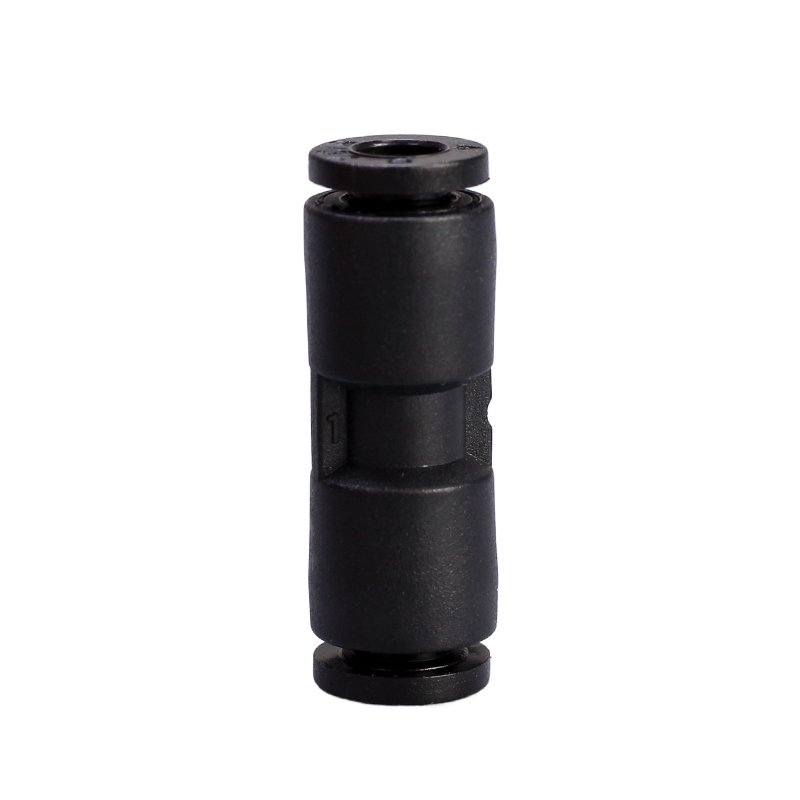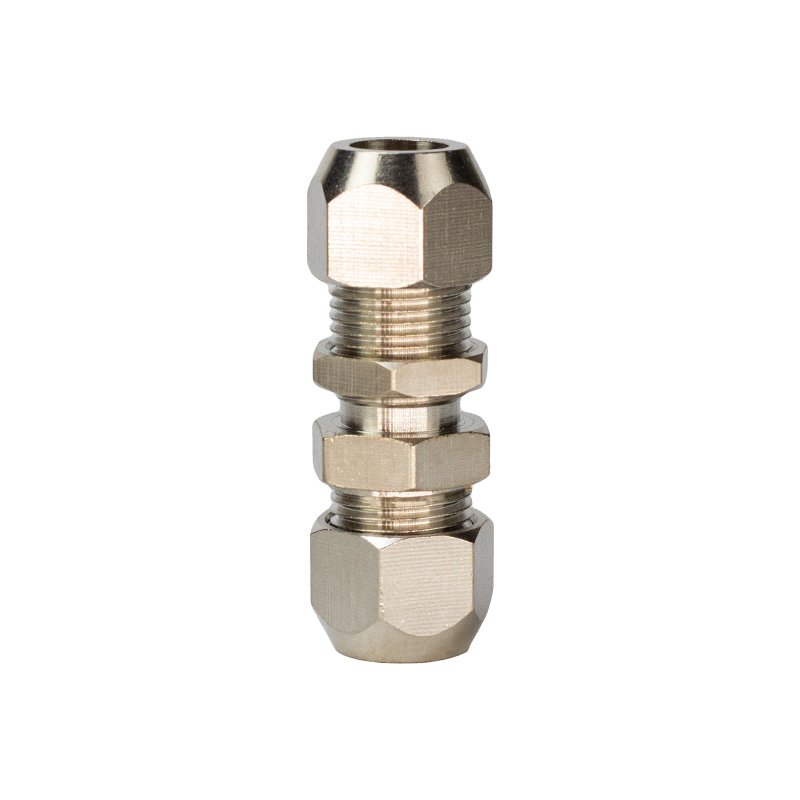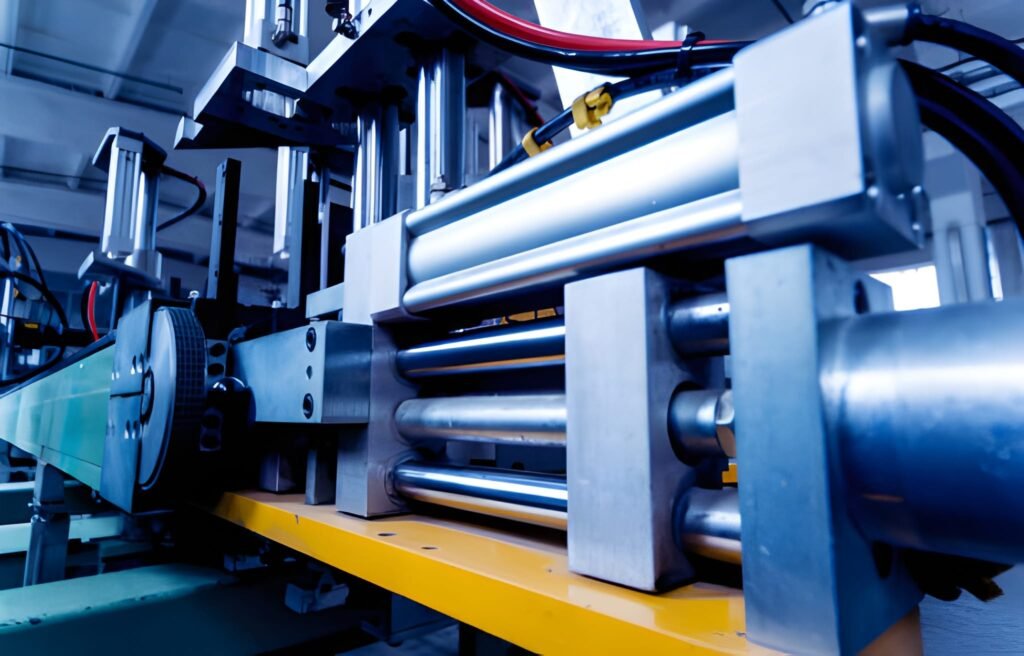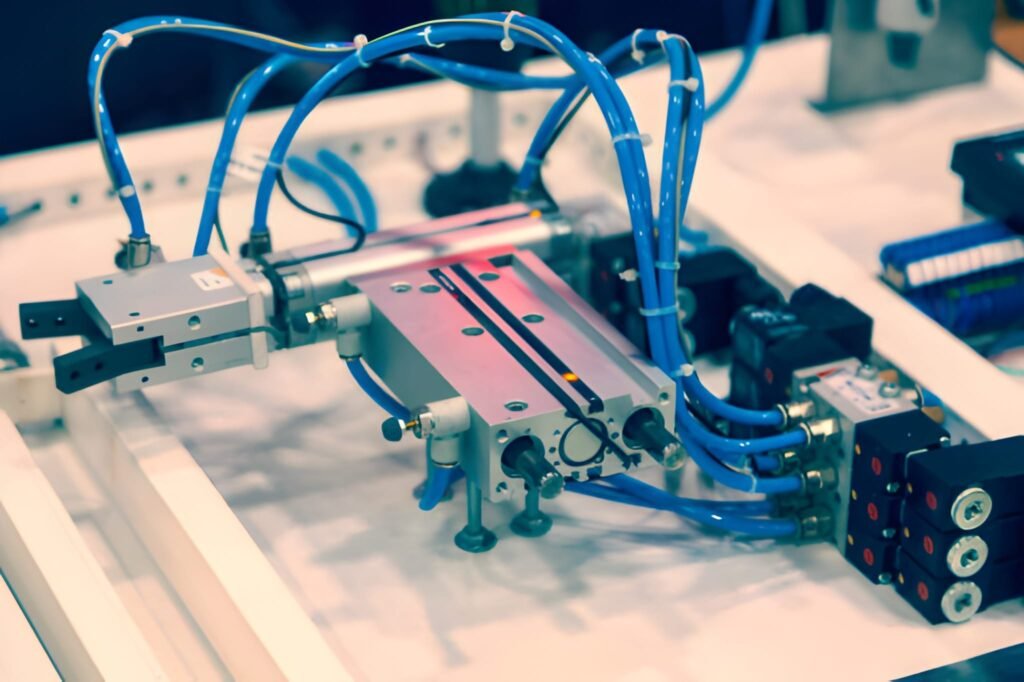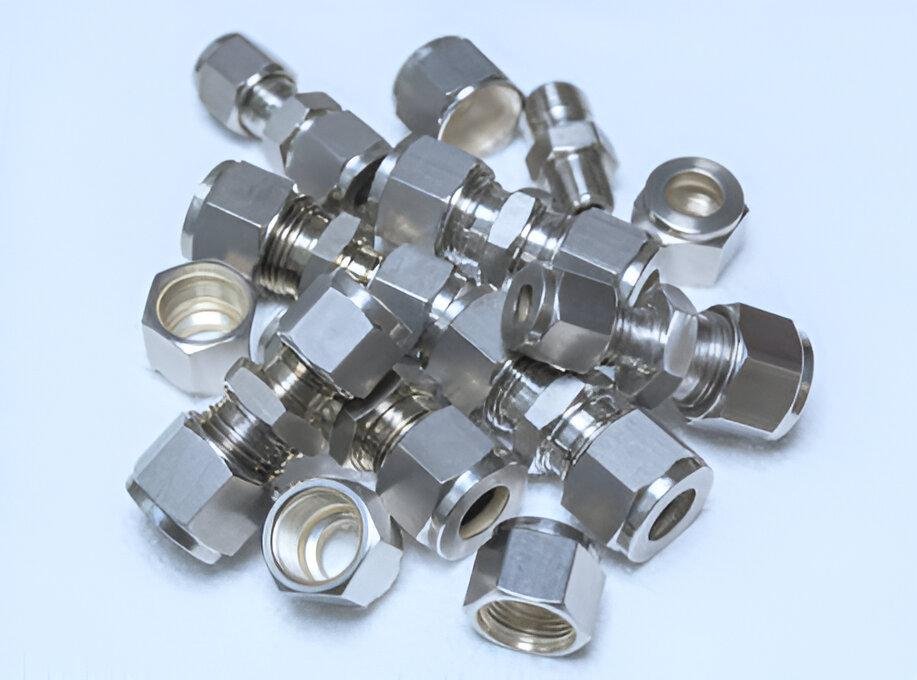The definition and basic working principle of standard cylinder
Standard cylinder, as a widely used actuator in the automation industry, mainly relies on compressed air to drive its piston to make linear reciprocating motion in the cylinder. This equipment is designed and manufactured to specific industry standards to ensure its performance, size and compatibility meet the needs of a variety of application scenarios.
The basic working principle is to convert the energy of compressed air into mechanical energy. Specifically, when compressed air enters through one of the cylinder’s inlets, it pushes the piston inside the cylinder, creating linear motion. This process can achieve bidirectional movement of the piston by changing the port through which compressed air enters the cylinder. Both ends of the cylinder are usually equipped with air ports. By controlling the air pressure of each air port, the movement direction, speed and force of the piston can be accurately controlled.
The design of a standard cylinder usually includes major components such as piston, piston rod, cylinder barrel, end cover and sealing elements. The piston rod extends from the cylinder barrel through the end cover, transmits the power of the compressed air to the external mechanical structure, and performs the required work tasks. The sealing element ensures that the compressed air inside the cylinder will not leak and prevents external contaminants from entering the cylinder.
Through this working principle, standard cylinders can provide a reliable and efficient power source to perform simple or complex linear motion tasks in a variety of automated production lines, assembly machinery and other industrial applications.

Wide range of applications for standard cylinders
Standard cylinders play a vital role in the automation industry. With their excellent performance and flexibility, they are widely used in many industries and application scenarios. The versatility and reliability of their design make standard cylinders one of the preferred solutions for mechanized and automated operations.
- Manufacturing and Assembly Lines: In manufacturing and automated assembly lines, standard cylinders are used to perform a variety of precise moving and positioning tasks such as pushing, pulling, lifting, compressing and rotating components. Their high precision and repeatable positioning capabilities are particularly suitable for production links that require delicate operations.
- Packaging and logistics: In the packaging industry, standard cylinders are used to operate and open doors, push conveyor belts, assist in packaging, boxing and labeling, etc., ensuring the high efficiency and reliability of the packaging process. In the field of logistics, cylinders are also commonly used in cargo handling and sorting systems in automated warehouses.
- Mechanical automation: Robotic arms and automated equipment often use standard cylinders as power sources to achieve precise handling, assembly, cutting, welding and other operations. The cylinder’s flexible configuration and high durability enable it to demonstrate excellent performance in highly repeatable operations.
- Testing and quality control: In product testing and quality control, standard cylinders are used to simulate various physical operations that the product may encounter in actual use, such as compression, tension, and bending, to ensure the durability and durability of the product. reliability.
- Food and pharmaceutical industry: In the food processing and pharmaceutical manufacturing industries, standard cylinders are particularly suitable for environments that require compliance with strict hygiene standards because they provide a clean, pollution-free power source. They play a key role in the handling, filling and packaging of sensitive materials.
- Automobile industry: In the automobile manufacturing process, from the assembly of parts to the final inspection of the vehicle, standard cylinders play an indispensable role. They are used not only for fast and precise operations on the assembly line, but also for durability testing and adjustments.
Advantages of standard cylinders
As the core actuator in the field of automation, standard cylinders’ design and performance advantages provide countless solutions for industrial automation. Several main advantages of standard cylinders are introduced in detail below:
1.Cost-effectiveness
Standard cylinders are significantly cost-effective in providing power solutions. They are relatively cheap to manufacture because standardized design and production processes reduce the complexity of manufacturing and mass production. In addition, the compressed air used by pneumatic systems is a widely available resource and has lower operating and maintenance costs than electric or hydraulic systems. These factors combine to make standard cylinders an affordable power solution, especially suitable for projects with limited budgets.
2.Easy to install and maintain
The standard cylinder has a simple design and the installation process is intuitive and easy. They can often be quickly integrated with existing pneumatic systems or mechanical interfaces without complex adjustments or customization. In addition, maintenance of standard cylinders is relatively simple because their structure is not complex and most maintenance operations can be completed with only conventional tools. Regular maintenance and inspection can ensure long-term stable operation of the cylinder and extend its service life.
3.Reliability and durability
Due to its simple structure and excellent manufacturing, standard cylinders can maintain stability and reliability in harsh working environments. They can withstand harsh conditions such as high temperature, high humidity, and dust, and still maintain normal operation. In addition, the durability of standard cylinders is also one of its significant advantages. They can maintain performance without degradation during repeated operations over a long period of time, providing users with a long-term solution.
4.Flexibility and adaptability
The design of standard cylinders allows them to exhibit high flexibility and adaptability in different application scenarios. Whether it is power, speed or stroke length, standard cylinders can be easily adjusted to meet different operating requirements by adjusting air supply pressure and flow. Additionally, they can be designed in a variety of sizes and shapes to suit specific spatial or functional needs. This adaptability enables standard cylinders to be used in a wide range of mechanical design and automation engineering, from simple movement tasks to complex automated control systems.
Disadvantages of standard cylinders
Although standard cylinders are widely used in the automation industry and have many advantages, they also have some limitations and disadvantages in some aspects. Understanding these shortcomings can help make more informed decisions during the design and application process. Here are some of the main disadvantages of standard cylinders:
1.Affected by compressed air quality
The performance of standard cylinders is highly dependent on the quality of the compressed air supplied to them. Moisture, oil and other impurities in the air can cause corrosion, wear and even damage to internal components, reducing cylinder performance and life. This requires that the air source system must be equipped with appropriate air handling components, such as dryers and filters, to ensure air purity, which increases the complexity and cost of the system.
2.Less energy efficient
Relative to electric and hydraulic systems, pneumatic systems are generally less energy efficient. This is because there are energy losses in the production and transmission of compressed air, especially when used on a large scale. Low energy efficiency not only affects operating costs, but also goes against the growing requirements for environmental protection, energy conservation and emission reduction.
3.Output force limit
While standard cylinders can provide sufficient power to complete many types of work tasks, the maximum force they produce is limited and may not be sufficient, especially in applications where space is limited or where extremely high force output is required. In this case, you may want to consider using a larger cylinder or switching to a hydraulic system.
4.Speed and power control are more complex
Although the speed and force of the cylinder can be controlled by adjusting the air pressure, precise control of the cylinder’s movement speed and output force is much more complicated than in a directly electrically driven system. This often requires additional control components and precise adjustments, adding to system complexity and cost.
5.Environmental impact
Pneumatic systems produce noise during operation, especially when exhausting. Excessive noise not only affects the comfort of the working environment, but long-term exposure to high noise environments may also cause damage to the operator’s hearing. In addition, energy is constantly consumed to compress air, which may be seen as a disadvantage in today’s world of energy shortages and increasingly stringent environmental requirements.
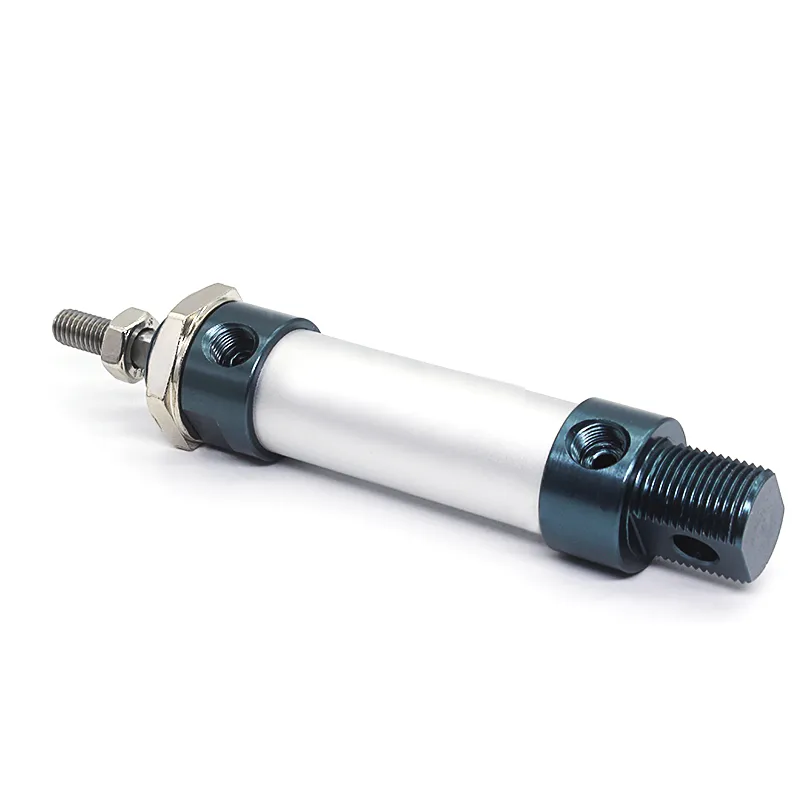
Standard cylinder application
Standard cylinders play an important role in several industries due to their flexibility and reliability. The following are several practical cases showing how standard cylinders are used in different scenarios, as well as the challenges encountered and solution strategies in these applications.
1. Automated assembly line
- Application scenarios: In the automobile manufacturing industry, standard cylinders are widely used in automated assembly lines to perform precise assembly tasks, such as positioning, installation and fixing of components.
- Benefits: Precise control and reliability of standard cylinders are crucial in this application. They provide stable and precise force, ensuring correct assembly of parts and reducing production defects.
- Challenges and Solutions: Cylinders may experience performance degradation due to poor air quality during prolonged operation. To solve this problem, the factory installed a high-efficiency air filtration system to ensure that the air sent to the cylinder is clean and oil-free. In addition, regular maintenance and inspection of the cylinder’s sealing system can reduce wear and extend cylinder life.
2. Logistics and warehousing automation
- Application scenario: In modern logistics centers, standard cylinders are used in automated cargo sorting systems to push goods on the conveyor belt to designated locations.
- Advantages reflected: The flexibility and speed control capabilities of standard cylinders play an important role here. They can be quickly adjusted as needed to accommodate packages of different sizes and weights, improving handling efficiency.
- Challenges and solutions: In the environment of continuous high-speed operation, the energy efficiency and noise of the cylinder have become concerns. By optimizing the system design, using high-efficiency cylinders that can operate at low pressure, and installing noise suppressors, energy consumption and operating noise are effectively reduced.
3. Food processing automation
- Application scenarios: In the food processing industry, standard cylinders are used in automated packaging lines to perform tasks such as pushing, turning and packaging.
- Advantages: In this application, the hygienic design of the cylinder and its ease of cleaning are very important. Standard cylinders ensure food safety and meet strict hygiene standards.
- Challenges and Solutions: Humidity and temperature changes in food processing environments may affect cylinder performance. Cylinders using special materials and sealing technology can effectively prevent corrosion and protect internal components, ensuring long-term stable operation.
FAQ
Q: What is a standard cylinder?
A: A standard cylinder is a pneumatic actuator, which is mainly composed of a cylinder, a piston, a piston rod and other components. It uses the force generated by compressed air to achieve linear motion or swing. They are designed and manufactured to specific industry standards to ensure compatibility and interchangeability with pneumatic systems.
Q: What is the working principle of standard cylinder?
A: Standard cylinders work by injecting compressed air inside the cylinder. When compressed air enters the cylinder from one end, the pressure of the air pushes the piston to move, thereby driving the piston rod to perform linear motion. By controlling the air intake and exhaust, the cylinder can achieve reciprocating motion of the piston.
Q: What are the main types of standard cylinders?
A: The types of standard cylinders are mainly divided according to their structure and function. Common types include single-acting cylinders (can only push the piston in one direction), double-acting cylinders (can push the piston in both directions), and magnetic cylinders. Cylinder (can sense position), etc.
Q: What are the application fields of standard cylinders?
A: Standard cylinders are widely used in many fields such as automated manufacturing, mechanical engineering, logistics transportation, food processing, medical equipment, and packaging machinery to perform various mechanical actions such as pushing, pulling, lifting, and pressing.
Q: How to choose a suitable standard cylinder?
A: Several factors need to be considered when choosing a suitable standard cylinder, including the required thrust, stroke length, working speed, working environment (such as temperature, humidity, whether there are corrosive substances, etc.), installation space and budget, etc. Reasonable selection of the type and specification of the cylinder according to the application requirements is the key to ensuring its normal operation and extending its service life.
Q: How to maintain standard cylinder?
A: Maintenance of standard cylinders includes regularly checking the wear of seals, keeping the inside and outside of the cylinder clean, checking the working status of the air source filter and dryer, and ensuring the quality of compressed air. Proper maintenance can reduce the failure rate and extend the service life of the cylinder.
Q: What problems may you encounter when using standard cylinders?
A: Problems that standard cylinders may encounter during use include aging and leakage of seals, unstable air source pressure, stuck piston, decreased output force, etc. These problems are usually related to improper maintenance of the cylinder or the environment in which it is used. With regular inspections and proper maintenance, most of these problems can be prevented or resolved.
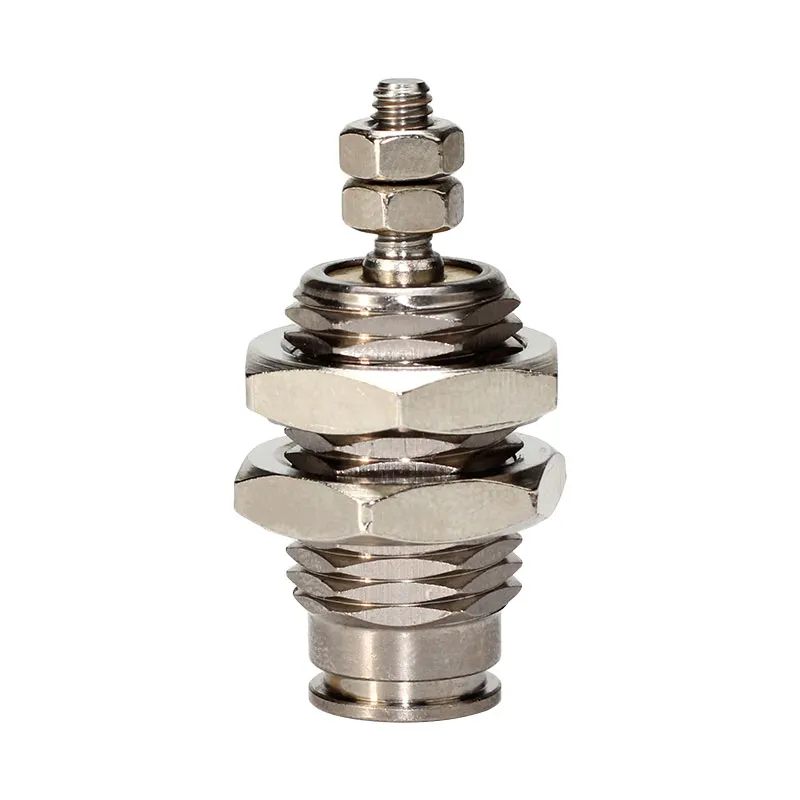
Summarize
Standard cylinders occupy an important position in automation technology due to their high cost-effectiveness, easy installation and maintenance, reliability and durability, and good adaptability. Although there are some shortcomings, such as low energy efficiency and great impact on air quality, these shortcomings can be effectively mitigated or solved through reasonable design and maintenance. For example, air quality can be improved by improving the air source treatment system; energy efficiency and control accuracy can be improved by using advanced control technology.
To sum up, standard cylinders are an indispensable part of the automation industry. Its advantages make it uniquely valuable in a variety of application scenarios, while its shortcomings need to be overcome through technological innovation and system optimization. With the continuous advancement and development of automation technology, the performance and application range of standard cylinders are expected to be further expanded, providing more efficient and reliable power solutions for various industries.

